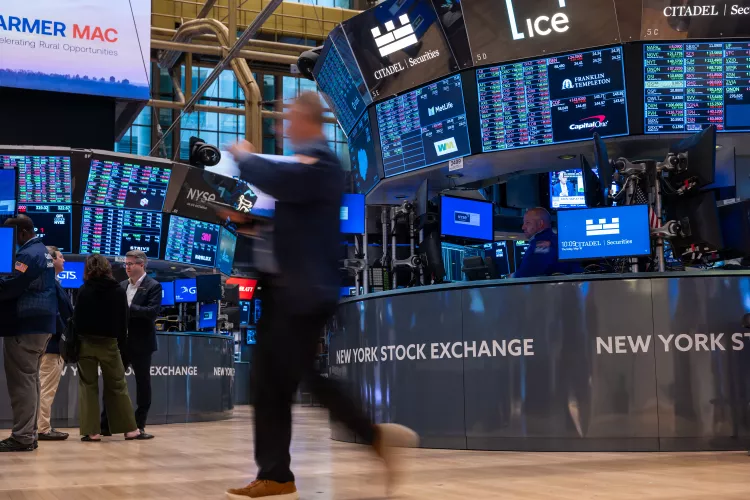The financial world is eagerly anticipating Federal Reserve Chair Jerome Powell’s upcoming speech on Monday, which could provide significant insight into the future trajectory of U.S. interest rates. As inflation continues to cool and economic data signals mixed growth, investors are wondering just how low the Federal Reserve is willing to go with interest rates to support the economy.
The Current Economic Landscape
In recent months, the U.S. economy has faced a delicate balancing act. On one hand, inflation is trending downward, with the Fed’s preferred inflation measure, the Personal Consumption Expenditures (PCE) index, showing that inflation fell to 2.2% in August—closer to the Fed’s 2% target. On the other hand, economic growth remains tepid, and there are concerns that continued high interest rates could stifle the recovery.
The Fed recently cut the federal funds rate for the first time in four years, a move that was largely seen as a precautionary measure to ensure economic stability. However, many market participants are speculating that further rate cuts may be on the horizon, especially if the economy shows signs of faltering.
What Investors Are Watching
All eyes are now on Powell’s speech, as it could offer a clearer picture of the Fed’s thinking on interest rates. Investors are particularly keen to understand the central bank’s long-term plans: will they take a more aggressive approach to cutting rates, or will they adopt a wait-and-see strategy as inflation cools?
Key factors that could influence the Fed’s decisions include:
- Inflation Trends: While inflation has come down, the Fed will be closely monitoring any new data to ensure this trend continues. If inflation begins to rise again, the central bank may hold off on further cuts.
- Job Market Conditions: The U.S. labor market has been resilient, but recent data shows signs of softening. Any sharp decline in employment could prompt the Fed to lower rates further to stimulate the economy.
- Global Economic Conditions: The global economy, particularly in China and Europe, has experienced slowdowns, which could impact the U.S. economy. The Fed may adjust its policy based on international developments.
The Impact on Markets
Powell’s remarks could have a profound impact on financial markets. If he signals that more rate cuts are likely, we could see a rally in equities, particularly in interest rate-sensitive sectors like real estate, utilities, and technology. Lower interest rates generally make borrowing cheaper, which can fuel business expansion and consumer spending—both of which tend to boost stock prices.
Conversely, if Powell indicates that the Fed will take a cautious approach to further rate reductions, markets could see increased volatility. Some investors have grown accustomed to the idea of lower rates, and any signs that the central bank might not be as aggressive as expected could lead to uncertainty and sell-offs, particularly in bond markets.
The Fed’s Balancing Act
The Federal Reserve’s challenge lies in finding the right balance between fostering economic growth and controlling inflation. Too many rate cuts could overheat the economy and reignite inflation, while too few could dampen the recovery and potentially lead to a recession.
In recent years, the Fed has navigated similar challenges, but the unique circumstances of 2024—particularly with lingering post-pandemic supply chain disruptions, geopolitical risks, and fluctuating commodity prices—make this period especially complex.
What to Expect on Monday
As we await Powell’s speech, many analysts expect that the Fed will remain cautious. The central bank may opt for a “data-dependent” approach, closely monitoring economic indicators before committing to further rate cuts. Powell is likely to emphasize flexibility, allowing the Fed to adjust its policies based on how the economy evolves in the coming months.
However, the possibility of more aggressive rate cuts cannot be ruled out, especially if new data suggests a sharper economic slowdown than anticipated. Investors and economists alike will be paying close attention to any hints that Powell may drop regarding the future path of U.S. monetary policy.
Conclusion
Jerome Powell’s speech on Monday could provide critical insights into how far the Federal Reserve is willing to go with interest rate cuts. With inflation stabilizing and economic uncertainty lingering, the central bank faces difficult choices in the months ahead. Whether Powell signals more cuts or a cautious approach, his words will undoubtedly shape market sentiment and influence the broader economic outlook.
Stay tuned, as Powell’s speech could set the tone for U.S. monetary policy well into 2024.


